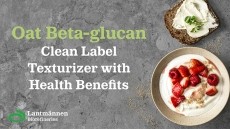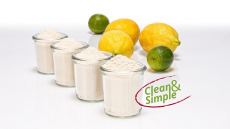Whipping up a better cream: HPMC shows promise
While the ingredient is currently used as an emulsifier for modifying the formation and growth of ice crystals in whipped cream, “little information concerning the effect of HPMC on processing properties of whipped cream is available,” wrote the researchers in Food Hydrocolloids.
“Hence, the objective of this work was to investigate the effects of HPMC on the textural and whipping properties of whipped cream.”
HPMC, also authorised to be labelled as carbohydrate gum in the US, is used extensively in the food industry as an emulsifier, film former, protective colloid, stabiliser, suspending agent, and thickener.
The ingredient is approved for food uses by the European Union (EU), US Food and Drug Administration (FDA), and the joint FAO/WHO Expert Committee on Food Additives (JECFA).
Researchers from the South China University of Technology, Zhejiang Gongshang University, and The Chinese Academy of Sciences tested the effects of different HPMC levels (from 0.025 to 0.125 per cent) on the characteristics of whipped cream. The HPMC was provided by Dow Chemicals.
The whipped cream was prepared using phosphate, partially hydrogenated palm kernel oil, xanthan gum, sucrose ester, and corn oil. Whipping occurred for 5 minutes.
The Chinese researchers, led by Qiangzhong Zhao, report that the partial coalescence of the cream with 0.125% HPMC was higher than for the cream without the whipping treatment (56.25 versus 4.77 per cent).
The overrun of whipped cream slightly increased when the HPMC level increased in the range of 0.025 to 0.125 per cent, said the researchers, while the hydrocolloid also showed dose-dependent effects on firmness, cohesiveness, consistency and viscosity, they added.
“From above results, it was clear that HPMC was effective to improve the textural and whipping properties of whipped cream,” wrote the researchers.
The researchers noted that future research should focus on understanding how HPMC affects the microstructure of whipped cream.
Thickeners, along with emulsion stabilisers, suspending agents, gelling agents, thickeners, fibre sources, mouthfeel improvers, fat replacers and processing aids all come under the umbrella of hydrocolloids, a market that has grown signficantly in the past 20 years in parallel to an increasingly complex food processing industry.
The food industry's most frequently used hydrocolloids include: agar, alginates, arabic, carrageenan, Carboxy Methyl Cellulose (CMC), gelatin, konjac flour, locust bean gum (LBG), Methyl Cellulose and hydroxypropyl Methyl Cellulose (MC/HPMC), microcrystalline cellulose (MCC), pectin, starch and Xanthan.
Source: Food Hydrocolloids Published online ahead of print, doi: 10.1016/j.foodhyd.2009.04.007“Effect of hydroxypropyl methylcellulose on the textural and whipping properties of whipped cream” Authors: Q. Zhao, M. Zhao, J. Li, B. Yang, G. Su, C. Cui, Y. Jiang


























